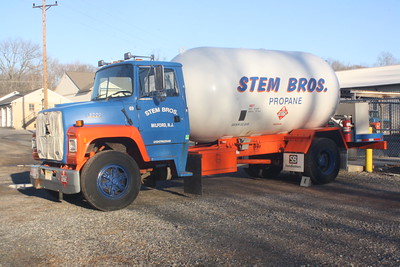
Gas and propane are two commonly used energy sources for residential, commercial, and industrial purposes. While they may seem interchangeable, they possess distinct characteristics, advantages, and disadvantages that make them suitable for different applications. This article aims to clarify the differences and similarities between gas and propane and provide essential information to help you make informed decisions when choosing between these two energy sources.
The Basics: Gas vs. Propane
A. Definition of natural gas
- Composition and sources: Natural gas is a fossil fuel primarily composed of methane (CH4) and other hydrocarbons such as ethane, propane, and butane. It is formed from the decomposition of organic materials over millions of years under heat and pressure. Natural gas is typically extracted from underground reservoirs, often found near oil deposits.
- Common uses in residential and industrial settings: Natural gas is widely used for heating, cooking, and water heating in homes. It is also used in industrial applications such as electricity generation, manufacturing, and chemical production.
B. Definition of propane
- Composition and sources: Propane (C3H8) is a hydrocarbon and a byproduct of natural gas processing and petroleum refining. It is a colorless, odorless gas that is heavier than air. Propane is typically stored and transported as a liquid under pressure, known as liquefied petroleum gas (LPG).
- Common uses in residential and industrial settings: Propane is popular for heating, cooking, and water heating in areas where natural gas is unavailable. It is also used in a variety of industrial applications, including forklifts, agricultural irrigation, and as a fuel for commercial vehicles.
C. Comparing the key differences
- Chemical composition: Natural gas is primarily methane, while propane is a separate hydrocarbon. Though both are derived from fossil fuels, they have distinct molecular structures and properties.
- Energy content: Propane contains more energy per unit volume than natural gas. One cubic foot of propane contains approximately 2,516 British thermal units (BTUs) of energy, while one cubic foot of natural gas contains about 1,030 BTUs.
- Production and extraction process: Natural gas is extracted directly from underground reservoirs, while propane is obtained as a byproduct during natural gas processing and petroleum refining.
Advantages and Disadvantages
A. Advantages of natural gas
- Affordability: Natural gas is often less expensive than propane due to its abundance and well-developed distribution infrastructure.
- Environmental impact: Natural gas burns cleaner than propane, emitting fewer greenhouse gases and pollutants.
- Accessibility: Natural gas is widely available in urban areas through an extensive network of pipelines.
B. Disadvantages of natural gas
- Limited availability in rural areas: Natural gas infrastructure may not extend to remote or rural locations, making it less accessible for some users.
- Potential for leaks and explosions: Natural gas is lighter than air and can accumulate in enclosed spaces, increasing the risk of explosions if leaks occur.
- Dependency on pipelines: The reliance on pipeline infrastructure can result in supply disruptions due to accidents, natural disasters, or maintenance.
C. Advantages of propane
- Portability and storage: Propane can be stored in tanks and transported easily, making it a convenient option for areas without natural gas infrastructure.
- Higher energy content per volume: Propane has a greater energy density than natural gas, making it more efficient for heating and other applications.
- Lower carbon emissions: Propane produces fewer carbon emissions than other fossil fuels, such as coal or oil.
- Higher cost: Propane is generally more expensive than natural gas due to factors such as transportation, storage, and production costs.
- Requires additional storage space: Propane tanks take up more space than natural gas pipelines and may require additional planning and safety precautions when installing them.
- Limited availability compared to natural gas: Although propane is more accessible in rural areas than natural gas, it may not be as readily available as natural gas in urban settings.
Safety and Environmental Considerations
A. Safety precautions for using natural gas and propane
- Proper installation and maintenance: Ensure that all gas and propane appliances are installed and maintained by qualified professionals. Regular inspections and maintenance can help prevent leaks and other safety hazards.
- Leak detection and prevention: Install gas and propane detectors in your home or business to detect leaks early. Be aware of the smell of a gas leak (natural gas is odorless, but an odorant called mercaptan is added for safety purposes) and know how to shut off the gas supply in case of an emergency.
- Emergency preparedness: Have a plan in place for evacuating your home or business in the event of a gas leak or explosion. Keep emergency contact numbers readily available and educate your family or employees about the potential hazards of natural gas and propane.
B. Environmental impact of natural gas and propane
- Greenhouse gas emissions: Both natural gas and propane emit greenhouse gases when burned, contributing to climate change. However, natural gas has a lower carbon footprint compared to propane and other fossil fuels.
- Impact on air quality: Burning natural gas and propane produces fewer harmful air pollutants than coal or oil, making them cleaner alternatives for heating and electricity generation.
- Comparison to other fossil fuels and renewable energy sources: While natural gas and propane are cleaner alternatives to coal and oil, renewable energy sources like solar, wind, and hydropower offer even lower environmental impacts.
Choosing Between Gas and Propane for Different Applications
A. Factors to consider when choosing between natural gas and propane
- Availability: Assess the accessibility of natural gas and propane in your area. In urban settings, natural gas may be more readily available, while propane may be the better option in rural areas.
- Cost: Compare the cost of natural gas and propane, considering factors such as utility rates, storage, and delivery.
- Environmental impact: Consider the environmental implications of each fuel source, including greenhouse gas emissions, air quality, and compatibility with renewable energy systems.
- Specific energy needs and preferences: Evaluate your unique energy requirements and preferences, such as the desired heating efficiency, appliance compatibility, and convenience.
B. Common applications for natural gas and propane
- Home heating and cooking: Both natural gas and propane are popular choices for home heating and cooking. Natural gas is often the preferred choice in urban areas, while propane is more common in rural settings.
- Industrial and commercial use: Natural gas and propane are used in a variety of industrial and commercial applications, including manufacturing, power generation, and transportation.
- Transportation and fuel alternatives: Propane is used as an alternative fuel for vehicles, such as propane-powered forklifts, buses, and commercial trucks. Natural gas is also gaining traction as a vehicle fuel, particularly for fleets and heavy-duty vehicles.
Conclusion
While gas and propane may seem similar, they have distinct differences that make them suitable for different applications. Understanding the advantages and disadvantages of each energy source is crucial for making informed decisions when choosing between them. By considering factors such as availability, cost, environmental impact, and specific energy needs, you can select the best fuel option for your home, business, or industrial application.

Mike is an experienced propane technician with over 15 years of professional experience in the field. He has dedicated his career to helping customers with their propane needs, from installation to maintenance and repair. Together with Jeremy, he co-founded this website to provide useful information and guidance to customers seeking reliable propane services.



